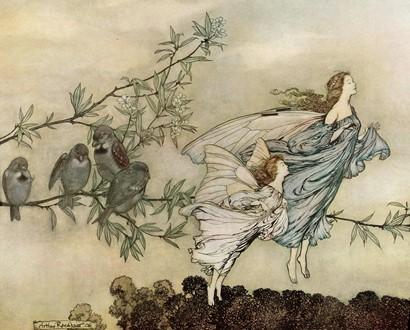The child in us knows about fairies. There are more than fairies, of course—elves, gnomes, giants, grouchy trees, lecturing flowers, legendary heroes, and men who sleep for 20 years. Fairies and their buddies live under, over, and beyond the world we see. We know about them because illustrators like Arthur Rackham (1867–1939) offer adventures to their invisible world.
J.M. Barrie’s “Peter Pan in Kensington Gardens,” illustrated by Rackham and published in 1906, stated: “Fairies never say, ‘We feel happy.’ What they say is ’We feel dancey.'” The illustration is richly colored and carefully detailed. In lush sepia tones, fairies swirl and twirl and float with happy elves on a bed of daisies amid berry-filled bushes. The drawing vibrates with motion and life.






